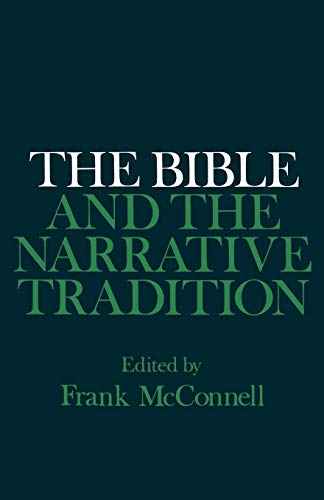The Thessalonian Correspondence: Pauline Rhetoric and Millenarian Piety
Written by Robert Jewett Reviewed By Markus BockmuehlRobert Jewett, whose previous books include Paul’s Anthropological Terms (1971) and A Chronology of Paul’s Life (1979), here offers a clearly and for the most part accessibly written addition to the handsomely produced ‘Foundations and Facets’ series edited by R. W. Funk.
The author’s basic thesis is, in his own words, ‘that Paul was faced with a situation of millenarian radicalism in Thessalonica, presenting a unique profile not matched elsewhere in early Christianity’ (p. xiii). His new contribution is the correlation of rhetorical analysis with historical and literary information about the setting at Thessalonica, to produce a hypothesis which explains the two letters as Paul’s response to a serious misinterpretation of his eschatology in the Thessalonian church. An important corollary of Jewett’s argument is his uncommonly integrated and coherent case for the authenticity of 2 Thessalonians. Methodological and stylistic clarity, especially in discussions of authenticity and the setting of the Thessalonian church, is complemented by a full and fully up-to-date bibliography.
Chapter One treats the problem of authenticity from the perspective of the history of research. Wrede and Trilling are shown to be the strongest exponents of a fully developed forgery hypothesis for 2 Thessalonians. Crucial arguments against the former’s proposed date of c. ad 100 include the fact that (a) ‘there is scarcely enough time between Paul’s death and ce 100 for a forgery to gain credence” (p. 6), and (b) the lack of late first-century evidence for the kind of eschatological confusion which 2 Thes. is countering. Trilling is criticized for relying on a statistically erroneous, cumulative argument of piling up marginally probable pieces of evidence. While admitting that critical opinion has largely swung towards the Wrede-Trilling line, Jewett believes the evidence to be ‘equivocal, with the likelihood remaining fairly strongly on the side of Pauline authorship’ (pp. 16f.).
Chapter Two discusses theories of a reversed sequence and of different recipients of the two letters, but concludes in favour of a single audience and the canonical sequence; arguments for the latter include references to a previous letter in 2 Thes. 2:2, 15; 3:17, as well as the logical sequence of references in the two letters to persecution and to the founding mission.
Chapter Three deals with ‘The Question of Literary Integrity’. Jewett addresses Schmithals’s reconstruction of four separate letters, the proposal of an interpolation of 1 Thes. 2:13–16; 5:1–11 (e.g. by B. A. Pearson, G. Friedrich), as well as more complex theories of redaction and interpolation. However, persuasive evidence is found to be wanting: ‘The problems addressed in most of these hypotheses are real, but they are simply compounded by additional, irresolvable contradictions posed by the untenable redactional and interpolational theories themselves’ (p. 46).
After discussing the problems of correlating chronological evidence in Paul’s letters with that in Acts, Chapter Four explains the advantages (and problems) of John Knox’s approach of treating the letters alone as primary evidence. Using the mediating argument demonstrated in his A Chronology of Paul’s Life, Jewett arrives at the spring of ad 50 as the date of both letters.
The pivotal Chapter Five offers some methodological remarks on the study of epistolary rhetoric. This is followed by a discussion of the weaknesses of non-rhetorical analyses: no controlling criteria exist which could establish the superiority of one thematic outline over another. Using classical rhetorical terminology (exordium, narratio, probatio, etc.), Jewett then presents highly detailed, tabular ‘rhetorical analyses’ for both letters; the genre of 1 Thes. is established as ‘demonstrative/deictic’ (p. 71), that of 2 Thes. as mixing ‘denial’ and ‘reproval’ (p. 81).
The technical and perhaps gratuitously detailed discussion of Chapter Five begins to bear fruit in Chapter Six, which argues on the grounds of ancient rhetorical practice that the long narratio section in 1 Thes. (1:6–3:13) reflects Paul’s definite concern with certain problems in the church. Jewett adduces e.g. the apparent Thessalonian concern over experienced persecution (2:14; 3:1–5) and the death of church members (4:13–18), the apparent unconcern to remain prepared for the parousia (5:3, 6–8), the problem of the ataktoi(‘obstinate registers of authority’, p. 105), etc.
Chapter Seven deals with what is known of the setting in Thessalonica. Jewett infers from the report in Acts that the charge of Acts 17:7 must have arisen from actual seditious behaviour by Jason and his church. He supposes the Thessalonian church to have consisted of mostly Gentile, relatively poor artisans and small traders (pp. 120f.) plagued by high taxation, unfavourable economic conditions and virtual political disfranchisement. Religiously, the atmosphere was determined by the civic imperial cult which had incorporated the redeemer mystery cult of Cabirus—thus leaving a religious vacuum which, according to Jewett, was an ideal setting for a millenarian movement of Pauline Christianity among the working class.
Chapter Eight surveys previous models of the Thessalonian congregation, pointing out their weaknesses. Traditional models are found to reflect cultural and denominational biases, and to be insufficiently critical and specific. The ‘enthusiastic model’ lacks an appropriate social theory to account for a variety of phenomena. Gnosticism is unlikely because of the absence of a number of essential Gnostic features in Thessalonica. The ‘divine man model’ fails to explain some of the clearly apocalyptic characteristics and introduces other features which are not at all reflected; nevertheless it may help to understand the profile of the ataktoi.
Chapter Nine brings anthropological and sociological analyses of modern millenarian movements to bear upon the Thessalonian situation, concluding that the formative circumstances of such movements are also distinctly present in Thessalonica. Phenomena such as the tendency on the part of some Thessalonian Christians to neglect work and civil obligations is taken as illustrative of a ‘millenarian radicalism’ which Paul’s letters try to correct. ‘Paul’s proclamation of the apocalyptic Christ was understood by these radicals along the lines of the discredited Cabiric cult, in which the benefactor was expected to return in defense of laborers to establish a realm of freedom and bliss’ (p. 176).
Chapter Ten completes Jewett’s argument: essentially, the reason for the writing of 2 Thes. is understood to be a misunderstanding of the first letter (esp. of 2:18; 5:1–5; 2:16) resulting in an intensification of the millenarian tendencies at Thessalonica. Jewett takes the occurrence of such a misunderstanding to be most plausibly confirmed by Paul’s suspicion of possible forgery in 2 Thes. 2:2; 3:17.
Jewett’s integrative approach to the Thessalonian correspondence is at once the great strength and the potential nemesis of his model; ‘grand unifying theories’ have traditionally not fared well in the world of critical scholarship. Jewett’s claims for his argument, however, are on the whole neither presumptuous nor exclusive of previous work (but cf. his curious criticism of previous rhetorical studies for not presenting ‘the total communication process implicit in a Pauline letter’: p. 64, ital. added). This reviewer, while doubtful of the author’s occasional accommodation of seemingly tenuous and far-fetched evidence, found himself favourably impressed by the uncommon coherence and flexibility of the overall argument. In the end one must also give full credit to a circumspect interpretation which, without having an apologetic or a sceptical axe to grind, plausibly fits the prima facie appearance of Pauline authorship of both Thessalonian letters.
Markus Bockmuehl
Cambridge University







